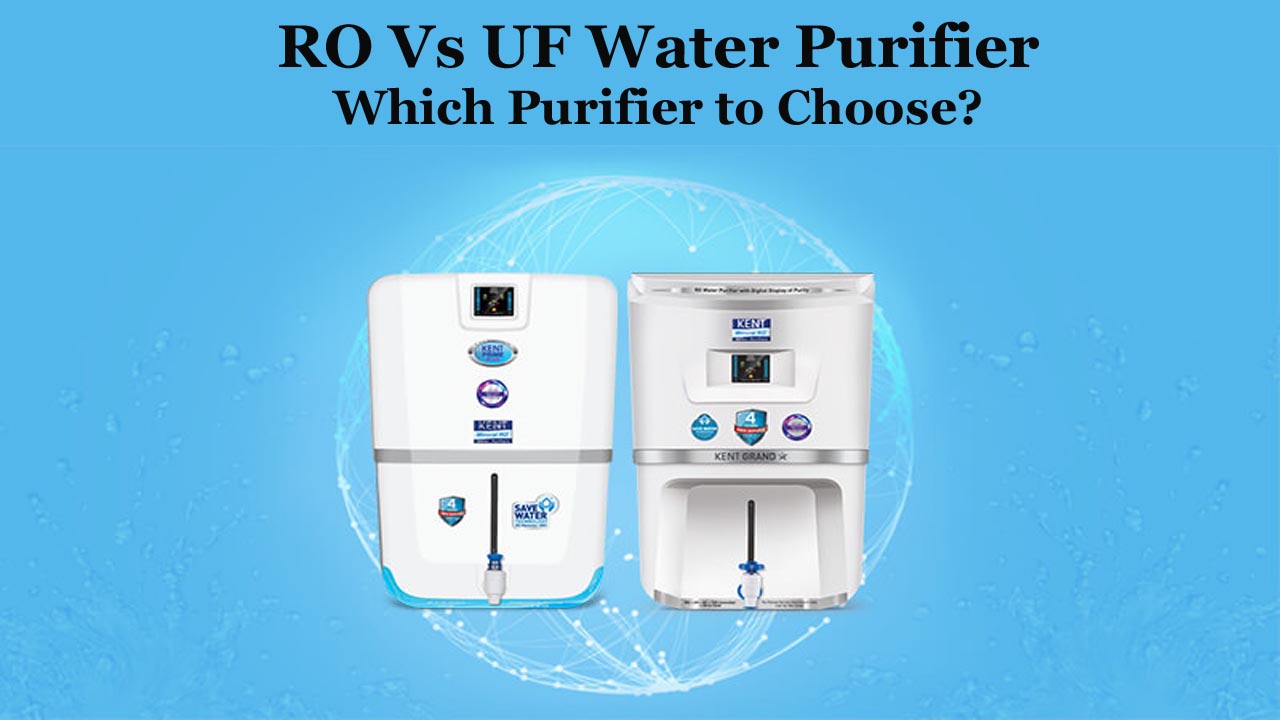Are you thinking of buying a water purifier but unaware of different technical terms like RO, UV, UF, etc.?
A water purifier is an appliance used to remove impurities from the water. The appliance uses water filters in this process for removing impurities. Modern water purifiers can remove impurities such as sediments, dust, and excess TDS. Moreover, these purifiers also remove harmful bacteria and viruses, making them fit for human consumption.
The water purity is measured in terms of total dissolved solids or, in short, TDS. Lower the TDS levels in the water indicates higher purity. Total dissolved solids are the impurities invisible to the naked eye and measured as parts per million (ppm). The World health organization recommends that TDS levels in drinking water up to 300 ppm completely fit human consumption. However, the Bureau of Indian standards or BIS has recommended this value to 500 ppm.
All your concerns on water purifiers are answered in this article. Read on to understand the different types of purifiers available and how to choose the appropriate one for your household.
1. RO Vs UF Purifier – A Description of both Water Purifier Systems
Once you have understood a water purifier, let us discuss different water purifiers and their filtration process. The process and types can vary based on the technology used for purification. Few water purifiers also combine various technologies in the process of water purification. However, all-electric water purifiers work on the same principle of filtering impurities and regulating TDS levels.
1.1 RO water purifiers
RO water systems employ the process of reverse osmosis for purifying water. Reverse osmosis is when external pressure is applied to overcome osmosis. Osmosis is the flow of particles through a semipermeable membrane from a region of low concentration to a higher concentration. Water purifiers use the process of reverse osmosis to overcome this osmotic pressure. RO filtration helps in removing almost 99% of impurities. For example, desalination of saltwater uses reverse osmosis to produce purified water.
In a RO purifier, the filter membrane plays an important role. This filter is capable enough to allow selective particles to pass through. As a result, it removes harmful dissolved particles and brings down the TDS levels to generate pure drinking water. However, RO purifiers do not remove the naturally occurring minerals like sodium and magnesium, which are required for the human body.
1.2 UF Water Purifiers
UF stands for ultra-filtration. It is a water purification system involving UF membranes to purify water for drinking purposes. The ultrafiltration process is useful for eliminating dissolved particles from water only at the microscopic level. Harmful contaminants like sediments, cysts, and chlorine are eliminated using the process.
UF filters restrict the passage of large particulates, hence called ultra-filtration. This process, however, retains other dissolved minerals like calcium and magnesium in water. As a result, UF purifiers cannot remove microorganisms from water and thus require different UV filtration processes.
2. Components Present – RO Vs UF Water Purifiers
2.1 Components of an RO Water Purifier
The various components of an RO water purifier are:
- Inlet pipe is the entry point of impure water into the RO filtration system. One valve point is attached to the house tap, and the other end connects to a sediment filter.
- Sediment filtration – It is the first component in the RO filtration process. The sediment filters remove visible dirt and sand particles from the passing water. This process only cleans the water from dust and visible impurities. However, the water is still impure and needs to pass through the carbon filters.
- Carbon filtration – The carbon filters help eliminate disinfectants like chlorine from the water.
- RO membrane – It is the last stage of RO filtration, which involves the elimination of all major dissolved solids.
Although RO purifiers are excellent purifiers, they cannot remove microorganisms like viruses and bacteria. The RO filtered water requires a different UF or UV filtration level to achieve maximum purification.
2.2 Components of UF Filtration
On the other hand, UF filtration consists of an ultra-filtered membrane responsible for removing large particulates from the water. UF filtration can happen independent of the RO process and is mostly employed in wastewater treatment facilities. Other applications of UF filtration are in the manufacturing and distillation industries.
2.3 Purification efficiency- RO Vs UF Water Purifiers
RO process is 95% to 98% efficient in removing impurities and making water fit for drinking. RO purifiers are mostly used in places having high water TDS levels. It is a complete process that involves the filtration of maximum particles from the water molecules.
On the other hand, UF is a filtration mechanism deployed in a water purifier to remove other microscopic particles like sediments. As the name suggests, it enables an extra level of filtration of the solution achieving a maximum level of 0.025 microns. Unfortunately, UF filters do not remove any bacteria and viruses from the solution and need further UV filtration.
Both purifiers are efficient in terms of achieving water purity. However, RO as a process helps eliminate more impurities in high levels of TDS solution. UF filters are useful for water having TDS less than 300 ppm.
| Features | RO purifiers | UF purifiers |
| Filters | It contains semipermeable membranes. Filters are slow, due to which RO purifiers require storage tanks. | It has hollow fibre membranes. Filters are fast and can filter one gallon of water per minute. |
| Purification efficiency | The membrane holes are small enough to remove salt molecules from the water. Hence, it can turn hard water into soft water. | The membrane holes are larger, so they cannot filter salt molecules. Therefore, it can’t convert hard water to soft water. |
| Water purity | High as it helps to achieve 98% purity | The process is a kind of enhanced filtration and removes impurities upto 0.025 microns. |
3. Which Purifier to Choose – RO or UF?
Your decision to choose the type of purifier relies on the TDS levels of water available in your house. Based on the above features and depending on your household requirements, you can choose a simple RO purifier or a combination of both RO and UF purifiers.
- Choose a RO purifier if the TDS level is more than 500 ppm. The purifier should also have UF and UV enabled for extra filtration.
- If the TDS level is less than 250 ppm, choose a UF+UV filter. Here RO is not required as it will only remove the dissolved solids, which is low in such cases.
Also Read, RO Vs UV Water Purifier.
Conclusion
Ultrafiltration and Reverse osmosis are techniques applied to process drinking water. The main aim of both these methods is to offer safe drinkable water to the public. This article unpacks the basic differences between the RO and UF water purifiers. UF utilizes filters to remove microbes. In contrast, RO can efficiently filter out microbes and dissolved salts. Hopefully, these differences will help you choose a product according to your requirements and within your budget.

